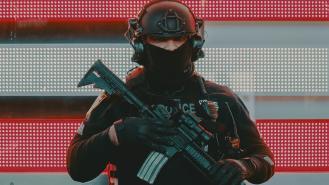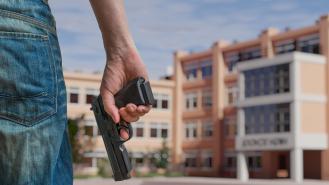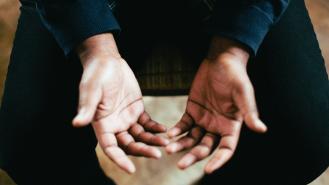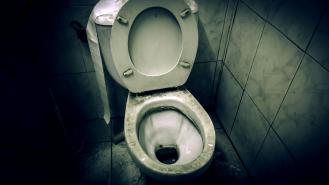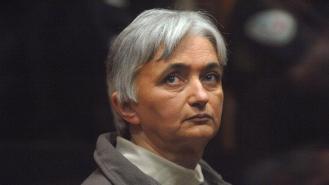Initially the Portuguese police launched a missing person hunt but within days it became a kidnapping investigation. The police said they were pursuing two lines of investigation. The first possibility being abduction by an international paedophile network and the second being abduction by an adoption network.
When the search revealed no trace of Madeleine, police used information from 30 witnesses to put together a sketch of the person they believed had snatched her.The McCanns made appeals to the person they believed had taken Madeleine and asked for an end to the bitterness from families of other missing children, who claimed detectives were working harder to find Madeleine than their own loved ones.
About two weeks after the youngster went missing, police identified Robert Murat as an ‘arguido’, a suspect, who has thus far not been arrested or charged but is being treated by police as more than a witness. Murat, a 33-year-old estate agent, was described by friends as someone whose over-enthusiasm could lead to him being misunderstood. He was first reported to police by British journalists, who became suspicious of the way he was hanging around the investigation.
The following week a Russian man, Sergei Malinka, who was linked to Murat, was also helping police with enquires.By the end of May 2007, after she had been missing for about three weeks, the detective leading the investigation, Chief Inspector Olegario Sousa, told journalists they had a suspect.
"He is a Caucasian man, 35 to 40 years old, medium build, 5ft 10in tall, hair mainly short, wearing a dark jacket, light or gold trousers and dark shoes."
The McCanns, both doctors from Leicestershire, originally steered clear of media. However, their tactic soon changed and they launched an incredibly high profile, worldwide campaign to find their daughter. A website set up specifically for the toddler received more than 50 million hits in just over 24 hours.
At the same time, the McCanns spoke of their guilt for leaving their children alone at the resort and said, at the very least, they hoped she had been taken by someone who desperately wanted a child of their own rather than an by an abuser.
By June they had an audience with the Pope, who prayed for their daughter and blessed a photograph of her. They also appeared on Spain’s version of ‘Crimewatch’ to make another emotional appeal.
Madeleine’s face was broadcast at the FA Cup Final, which was seen by an estimated 500 million people. Following on from this, a short video about the toddler was shown at the UEFA and Heineken cup finals, while Liverpool players posed with a banner that read, “Bring Maddie Home”.
All this media attention invited criticism of the couple, who were forced to compose themselves at a press conference and were grilled about whether they had anything to do with their daughter’s disappearance.
In the middle of June it looked like there had been a breakthrough in the case, when an anonymous letter was sent to a Dutch newspaper allegedly identifying where Madeleine’s body had been buried.
Dutch police said the letter was being taken seriously because it was similar to one sent to the same newspaper the previous year, which identified the hiding place of the bodies of two missing children. However, the letter turned out to be useless.
Similarly, sightings of blonde girls bearing a resemblance to Maddy McCann were reported, all of which came to nothing.
It was not long before the McCanns become suspects in the investigation. In August, blood samples from the Portuguese apartment where Madeleine had been sleeping were sent to a British laboratory for DNA testing. The blood did not match but did little to stop rumours that the McCanns had themselves been implicit in their daughter’s disappearance.
By September 2007, both parents had been declared formal suspects. Kate McCann was reportedly told she could make a deal with police if she admitted to accidentally killing her daughter, while husband Gerry faced similar interrogation.
The family's spokesman, Justine McGuinness, said Kate McCann was also asked about traces of blood found in a car, hired by the couple four weeks after Madeleine's disappearance, as well as about DNA evidence allegedly found on clothing.
Gerry McCann's sister, Philomena McCann, told reporters, "They are suggesting that Kate has in some way accidentally killed Madeleine, then kept her body, then got rid of it. I have never heard anything so utterly ludicrous in my entire life".
The McCanns flew back to England and Portuguese police admitted that confusion and disagreements in the early stages of the case meant that they found it extremely difficult to prove their suspicion that her parents were somehow involved in Madeleine's disappearance and presumed death. The McCanns strongly and repeatedly denied any involvement.
Meanwhile, sightings of blonde girls continued to flood in from various countries. Journalists flocked in late September 2007 to Morocco after a picture, showing a small blonde girl being carried, was passed to Interpol.
The investigation appeared to face further setbacks after two senior Portuguese police on the case were either removed or requested a leave of absence.
By this stage, both the media and the general public were hooked on the story and were reporting any new evidence that surfaced. One newspaper claimed that traces of Madeleine McCann's body were found on a Portuguese beach, a story later revealed to be untrue. Other front page headlines included, “We can prove parents did it - Portuguese police”; “Kate faces ten years in jail - now parents could be charged with abandoning their children”; “Syringe found in Madeleine's apartment”; “Madeline was 'killed by sleeping pills' - sensational new claim”; “McCanns or a friend must be to blame” and “Parents' car hid a corpse - Portuguese police”.
By November 2007, Gerry McCann had returned to work, although life was far from back to normal. Another newspaper report suggested that the couple had sold their daughter, while yet others said they had sold film rights to the story and that the couple had split up in the face of the enquiry.
Some relief came for the couple in February 2008 when Portugal's most senior police officer suggested that detectives may have been too hasty in making the McCanns official suspects in the investigation into the disappearance of their daughter.
Alípio Ribeiro, the national director of the Polícia Judiciária, conceded that police potentially acted too soon. He said the naming of the parents last September as official suspects might have dissuaded people from coming forward with information that could have helped. By now the case was eight months old and police were no closer to finding the missing girl. The case was beginning to wind down.Free from suspicion, the McCanns were able to take on the terrible reports and libel that had sprung from their plight. In March 2008, Madeleine's parents won a libel settlement and apology from Express Newspapers for suggesting they had been responsible. On that occasion the newspaper group paid £550,000 to the Find Madeleine campaign.The McCanns decided to hire a Spanish detective agency to run a 24-hour confidential telephone line in the hope that new information would be forthcoming, targeted at Spain, Portugal and Morocco, countries they believe may hold leads about Madeleine.
In July 2008, Robert Murat, the first official suspect in the case, accepted a £600,000 damages settlement over allegations in UK newspapers that he had been involved in Madeleine's disappearance. His suspect status was subsequently removed. Several months later, Sky News apologised to Murat and agreed to pay substantial damages over a libellous web story that likened him to a high profile child murderer.
In October 2008, it was ruled that Express Newspapers would pay £375,000 in libel damages to the friends of Kate and Gerry McCann, who were on holiday with them when Madeleine McCann vanished. The money will be donated by the group, known as the Tapas Seven, to the Find Madeleine Fund. Articles published in some of the British newspapers suggested that some of the seven had been identified as potential suspects by the Portuguese authorities.
Amidst the thousands of media reports and millions of pounds worth of publicity and campaigning, to this day Madeleine has still not been found.


